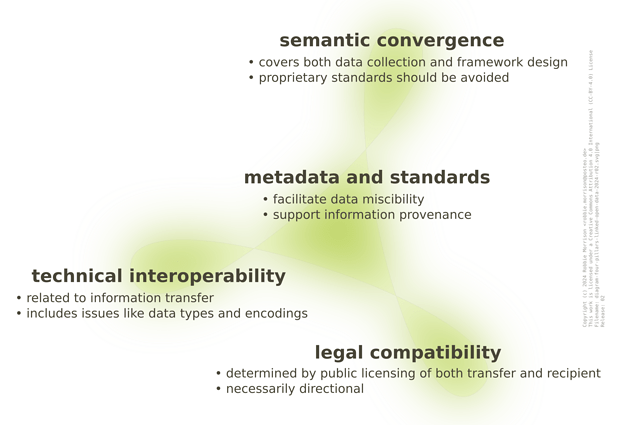Apologies for the oblique reference in the title to the famous Samuel Taylor Coleridge poem:
Water, water, every where,
And all the boards did shrink;
Water, water, every where,
Nor any drop to drink.
There have been several webinars over the last weeks to promote data portals in the energy domain. Some are new projects, less than a year old — others have been through any number of iterations. These projects aim to provide easy public access to energy‑related datasets with an emphasis on GUI‑based usability.
But normally with little apparent attention to genuine information reusability — and certainly with no real consideration of open and interoperable data licensing. Moreover few, if any, provide API access, serve metadata, support sophisticated versioning, embed license notices (likely difficult to determine in most cases), and subscribe to semantic standards. Some portals actively ban other portals from using their data. Other portals complain but don’t have sufficient legal leverage to prevent this practice.
I am not going to name individual data portal projects in this posting, nor single out any primary data providers. Except to say such portals are offered variously by multilateral institutions, projects funded by public science, civil society organizations supported by philanthropic foundations, industry, including system operators, and statutory bodies established under law to disseminate mandatory reporting.
While providing ready public access to datasets has clear use‑cases, it falls far short of contributing to the data commons that would collectively benefit all. Indeed, there may well be perverse incentives for data portals to intentionally develop information silos and seek network effects. With their backers doubtless viewing the resulting engagement as success.
On the other hand, there are projects designed to provide genuinely reusable data infrastructure to meet the needs of energy system analysts — based on the paradigm of linked open data (LOD). And again, I am not going to cite individual examples. But these initiatives would seem the right places to leverage community participation to best advantage.
Linked open data also needs to be placed under suitable licensing to support legal interoperability. Practical considerations limit the choice of public license, in my view, to Creative Commons CC‑BY‑4.0, CC0‑1.0, or something inbound compatible.
That collective activity also needs to be backed up by a consensus on open standards covering semantics, metadata, and review. I intentionally omitted technical interoperability from that list because I don’t believe this to be a problem — please correct me if not so
If you are involved — or can influence — the development of these various data portals, please explain these wider community objectives and values.
Otherwise we modelers, like the ancient mariner, may be destined to wander the earth, dead albatrosses in tow, unable to do the kind of systemic analysis and repeatable science so necessary, and eternally condemned to harass wedding guests, passers by, and unsuspecting cybercitizens too.
Again, sorry for the lousy metaphors, R
